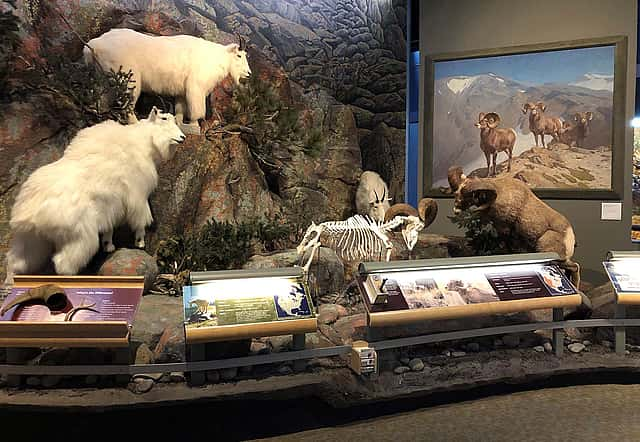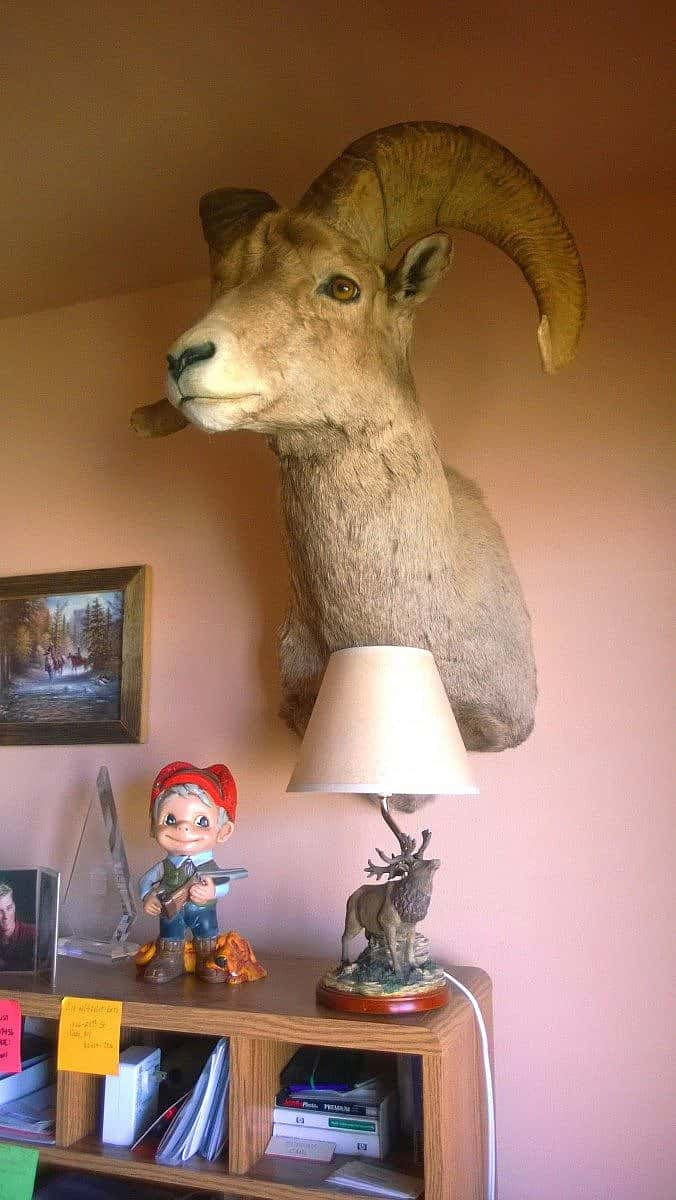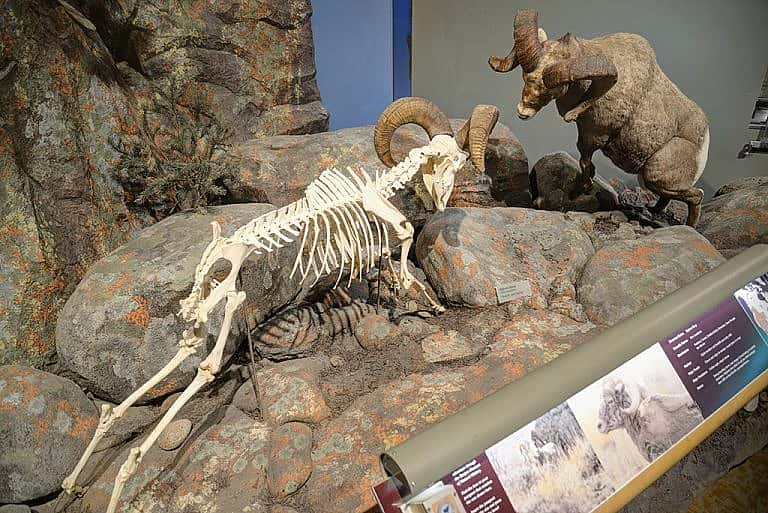
Bighorn sheep: Rockin’ the Rockies
The head of a bighorn sheep peers down on anyone using the computer just below him. It’s almost as if he ran smack-dab through the wall and promptly became stuck, perched high on the office wall.
Yes, the sheep belongs to my husband, a trophy from a Wyoming hunt a few years ago. A bighorn sheep-hunting trip is no easy task in our state. First, there’s the issue of where they live: rocky, rugged mountain terrain. Then, there’s the matter of getting one of the limited-quota licenses. Nowhere is “the luck of the draw” more apropos than for a hunter applying for a sheep permit.
Okay, so what makes bighorn sheep such an attraction? Bighorn males, called rams, are famous for their large, curled horns which can weigh something like 30 lb., more than the total weight of all the other bones in their bodies combined! Those horns grow and grow each year from two spikes that look like antennae, to “full curls” and beyond. (Females have horns, too, but not as big.) One look at the size of a fellow sheep’s horns and a would-be foe decides to “fight another day.”
In this photo of the Center’s ram exhibit in the Draper Natural History Museum, we show how two sheep—affectionately known as “Arnold” and “Big Boy”—rear up on their hind legs and hurl themselves at each other in charges of some 20 miles per hour!* Apparently, one can hear the sound from some distance away. Their thick, bony skulls with air-filled chambers, however, usually prevent serious injury with all that head butting which can last for hours! Sooner or later, one ram decides he’s had enough and simply walks away.
Bighorn sheep are also popular with wildlife artists whose fascination with the mammals is unmistakable in their work. Look for these “mountaineers” when you visit the Buffalo Bill Center of the West, and then Yellowstone!
Right: Carl Rungius’s “The Mountaineers — Big Horn Sheep on Wilcox Pass,” 1912. Oil on canvas. Buffalo Bill Center of the West, Cody, Wyoming, USA. Gift of Jackson Hole Preserve, Inc.
*The Draper Museum acquired these two rams as a result of poaching on Christmas Eve 2000. Quick action by an alert citizen led to the poachers’ arrest by the Wyoming Game and Fish Department who donated the two animals to the Center.
Written By
Marguerite House
Marguerite House served as the Center of the West’s Acting Director of Public Relations until her retirement at the end of 2018, and as editor of its member magazine, Points West, through May 2019. Following a seven-year stint as Business Manager for the Cody Country Chamber of Commerce, Marguerite moved “across the street” to the Center in 1999. She then held five different positions in three of the Center’s four divisions, landing in PR in 2005. “I think that [gave] me all kinds of perspectives for our readers,” she says. She enjoys writing (especially a weekly column for the local newspaper called “On the House”), cooking, and spending time with her six grandkids.



